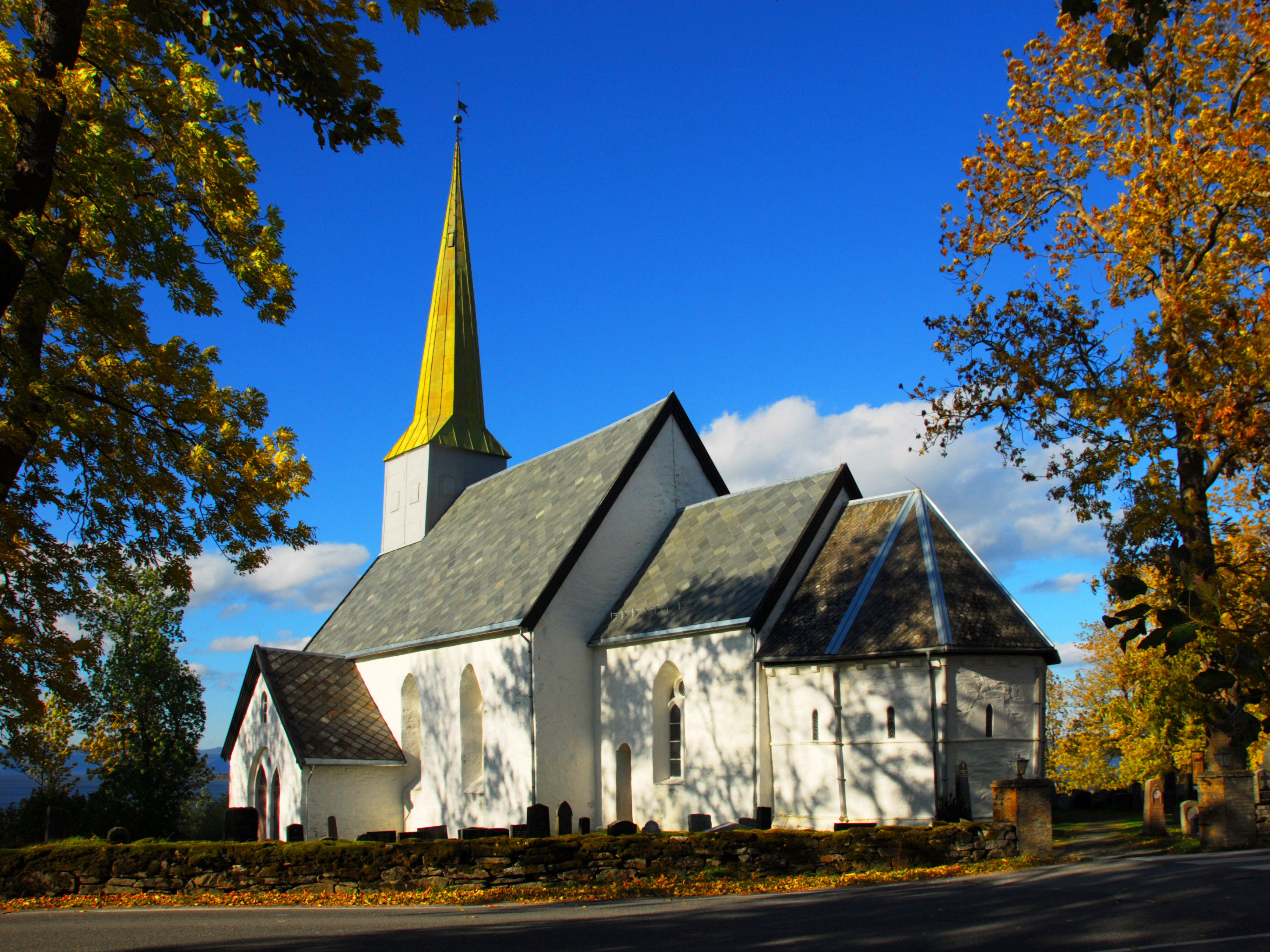
The Alstadhaug stone church on a beautiful site overlooking a part of Trondheimsfjorden.
The main part of the church was built in the last half of the 1100s and consecrated to St. Peter. About 1250 an apsis, the Octagon, was added; this is the part closest to the camera, see also below. About 1500 the sacristy, also called 'the Maria chapel', was added (not visible) and about 1700 appeared the porch (left). (In Scandinavia the latter is still called 'the weapon house'; weapons were always left here before entering the church.) The present steeple was built 1788. A major restoration took place in 1946-52.
(2014-10-06)
[Please note that there is another old church on Alstahaug (no 'd') on the island of Alsta in Northern Norway.]
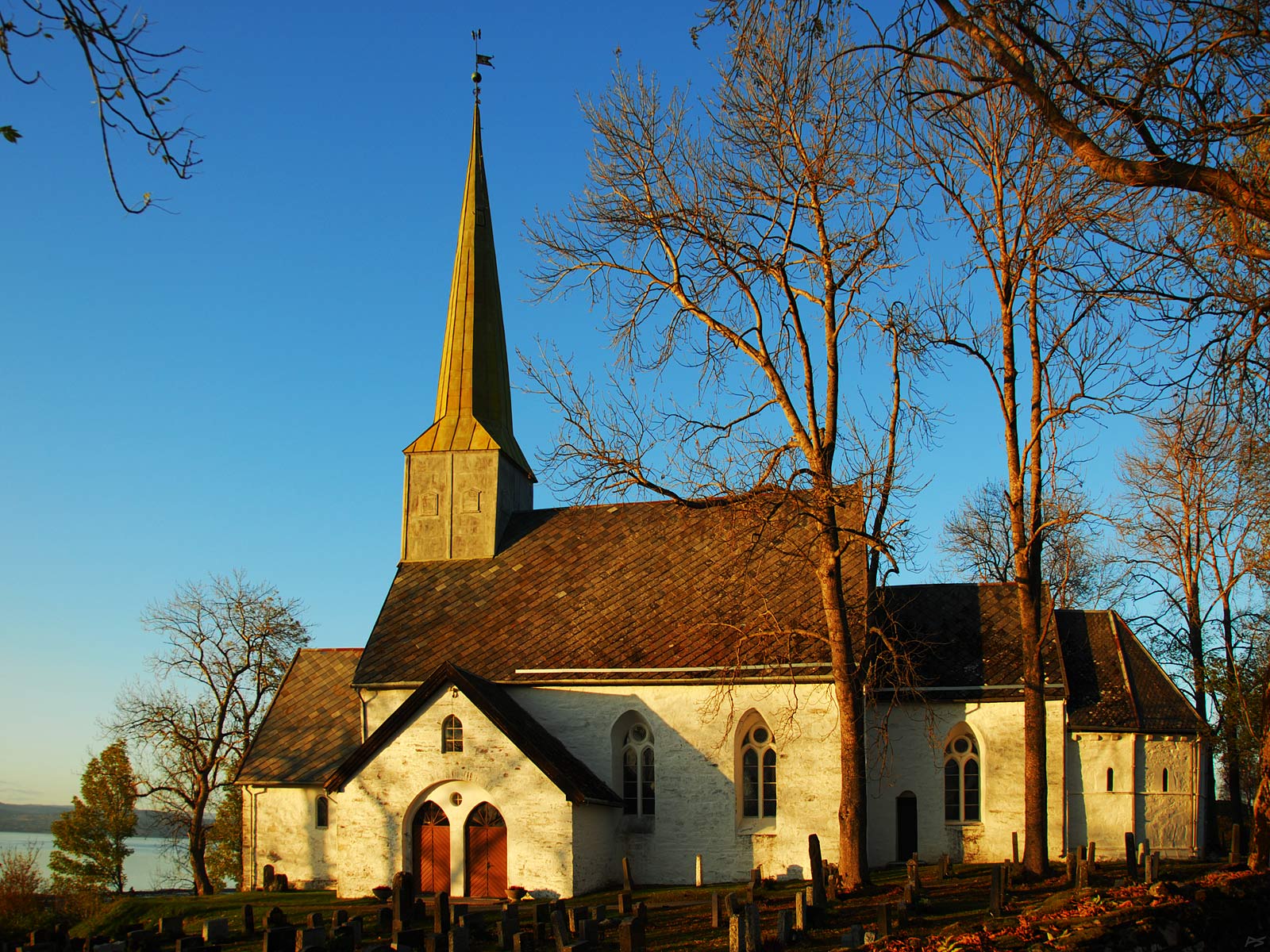
The south side of the Alstadhaug church with entrance.
(2009-10-28)
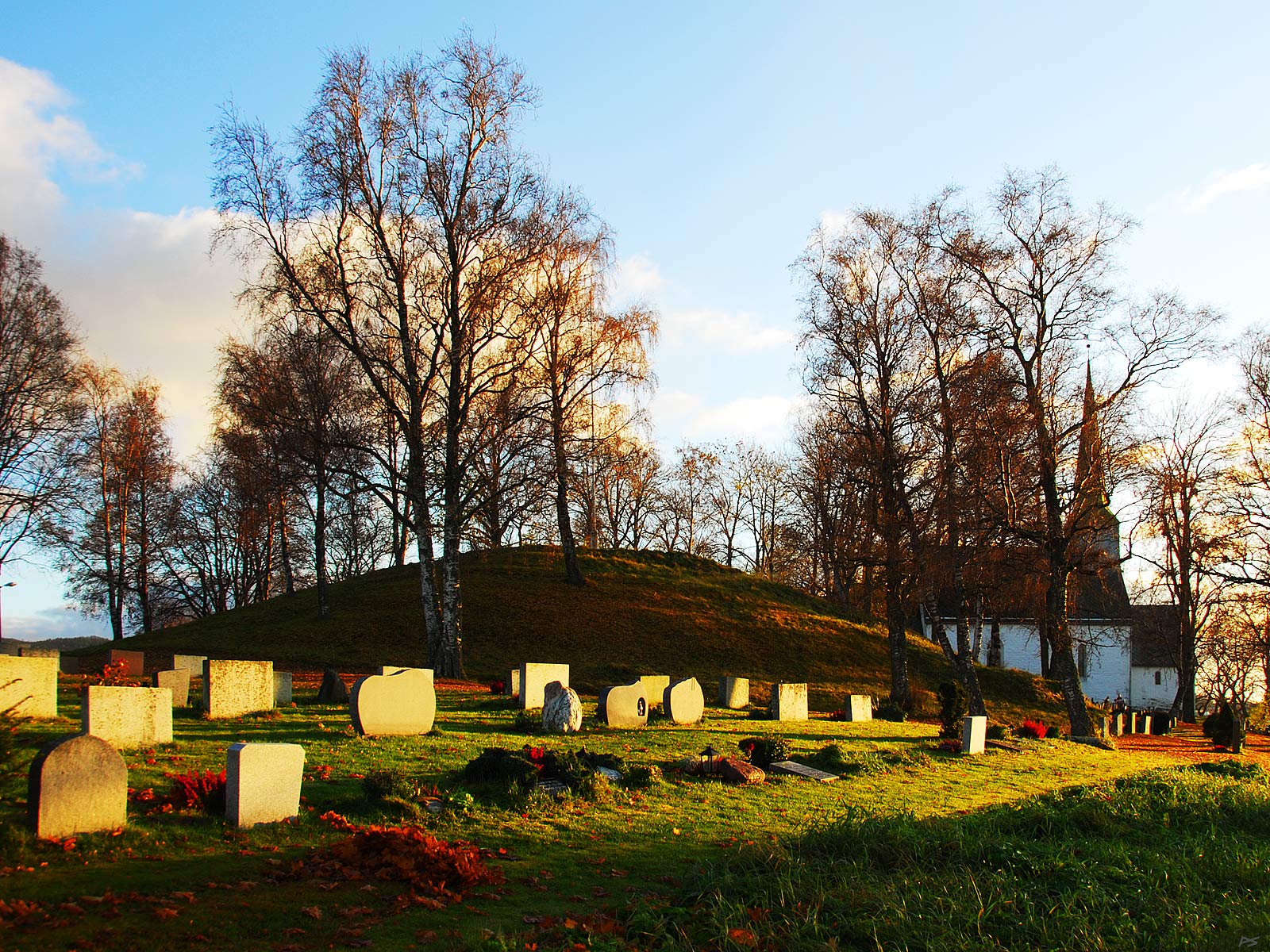
Alvir's mound. The name Alstadhaug is a misnomer; until about 1600 it was written Alshaug/Elshaug and this is still consistent with the local pronunciation ("Æsh-hau"). It evidently stem from this large burial mound only a few meters north of the church: Old Norse Alvishaugr, Alvir's mound. (Alvir is the probable pronunciation in this district, elsewhere it's Olvir/Ölvir.) From pagan times the site seems to have been the thingstead (legal assembly of free people) for a large district and there was also a pagan temple that was recycled as a Christian church at the beginning of the Christian era in this region. There is a flagpole on the top of the mound. Nobody knows what's inside the mound, but it's probably Alvir's earthly remains together with various equipment for use in his next life.
(2009-10-28)
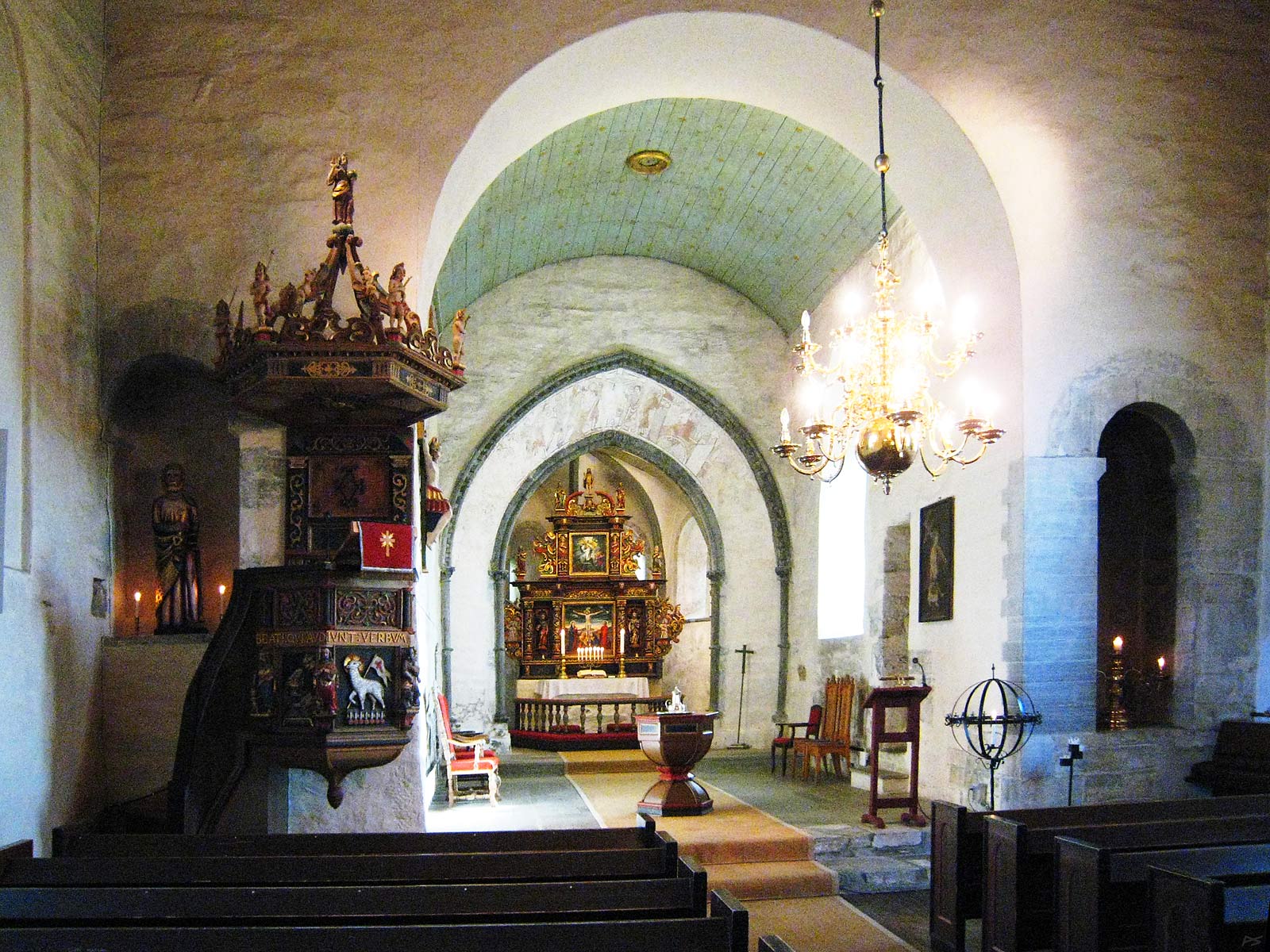
The pulpit and the chancel/apsis, the baptismal font in the centre. Don't expect straight lines or otherwise perfect geometry here. Some 'recent' repair is seen on the right side.
(2008-09-26)
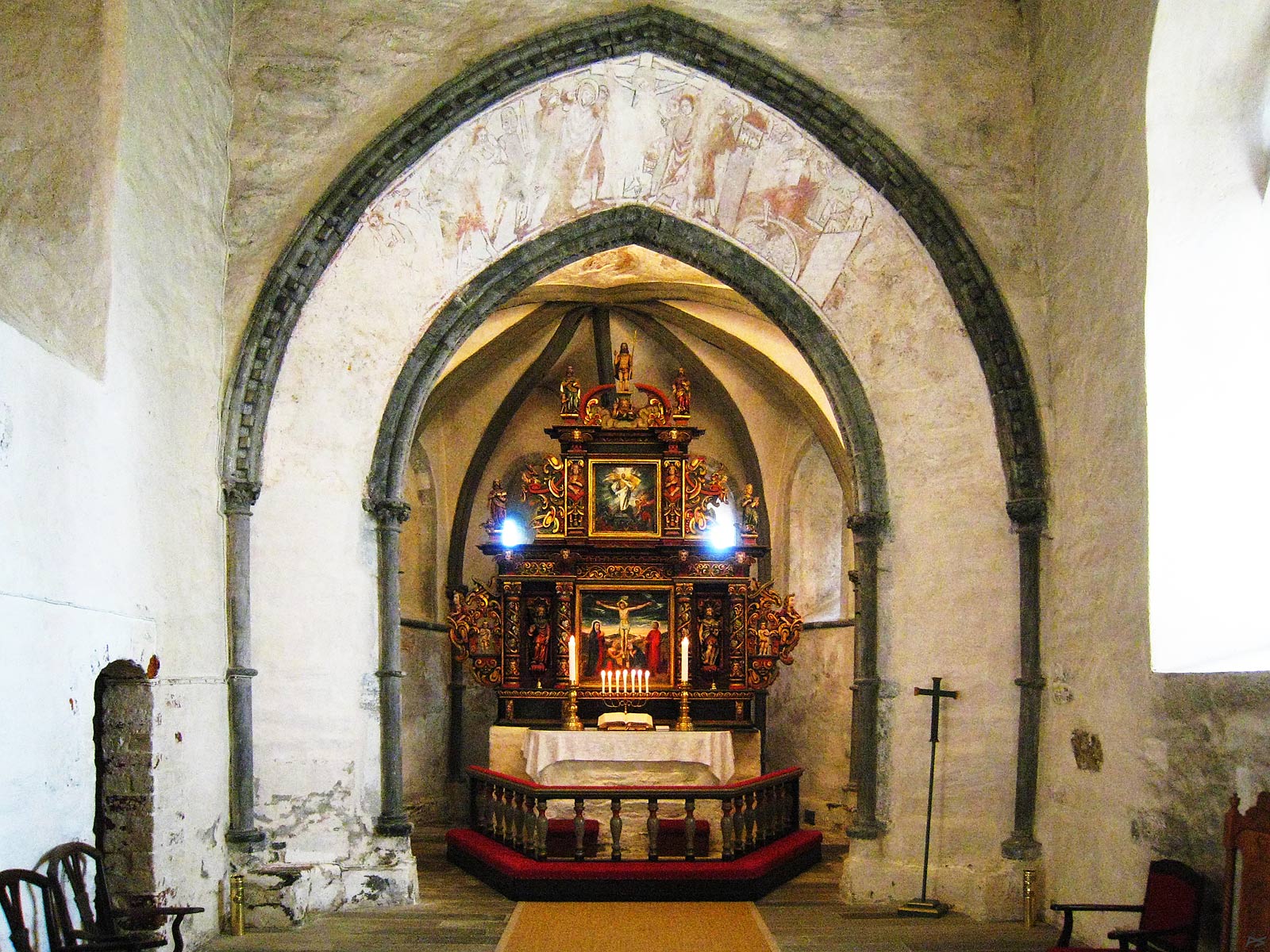
Above the chancel (and inside the apsis) murals from the 1200s are being uncovered. After the Protestant Reformation in 1547 wall decorations were whitewashed.
Less than a hundred years after the Reformation came a period of new church decoration in the region.
The altarpiece was carved by Johan Bildsnider in 1646. (The highlights are sunlight.)
The altar stands in the apsis (the 'Octagon'). The only other church in this country featuring an apsis is the
Nidaros Cathedral and this was probably what inspired the building of the Alstadhaug version.
Hidden in the stone altar is a relic, allegedly a piece of St. Peter's finger.
(2008-09-26)

Details from three sides of the pulpit. On the corners the four Evangelists, each with a book attribute, from left to right: Matthew and the Son of Man (Matthew 8:20/17:22/26:64); Mark and a lion; Luke and an ox; John and an eagle. Framed left: Annunciation of the Virgin May. Framed centre: Agnus Dei – the Lamb of God standing on the book of the Seven Seals (Revelation 5), carrying a traditional banner. Framed right: The Archangel Gabriel carrying a scepter.
This pulpit was made during the years 1625–1655 by Johan Bildsnider (i.e. 'Woodcarver'), Helge Bildsnider, Johan Kontrafeier (i.e. 'Painter') and an unknown artist. In 1949 the pulpit was restored by Ola Seter and the Lamb was carved by Oscar Lynum.
(2008-09-26)
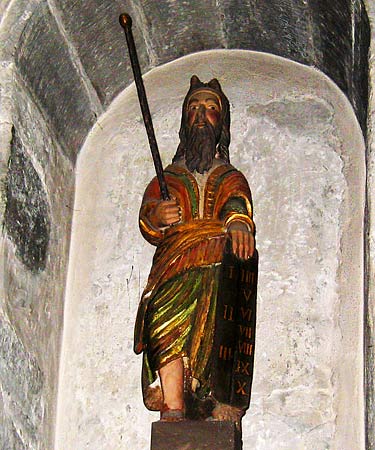
Statue of Moses – with horns – standing in the niche on the right in the fourth picture. The horns are due to a mistranslation from Hebrew to Latin by St. Jerome around AD 400, appearing in what is now known as the Vulgate. In modern bible versions Exodus 34:29–35 says three times that when Moses came down from mount Sinai with the tables, the skin of his face radiated. Simplified, there is a Hebrew word 'qaran' that means 'grow horns' with a derived meaning 'radiate', and St. Jerome might not have been aware of the latter. Various artists have, most kindly, equipped Moses only with modest horns.
